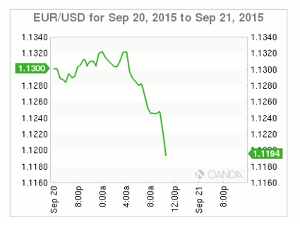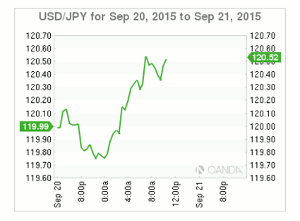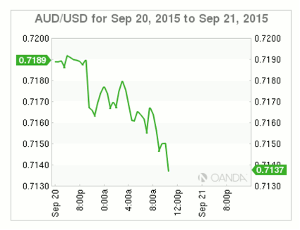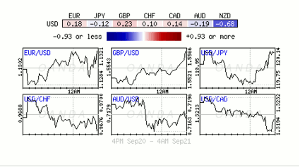While the Fed’s inaction Thursday was largely expected, it was the dovish message that has blindsided the market, so Dean Popplewell, of MarketPulse, takes a technical look at three currency pairs and shares his outlook for the remainder of the week as well as the factor he feels will continue to keep the forex markets on its toes.
Compared to last week, this is a light week for macro events. The lower for longer rate policy decision by the Fed last Thursday has investors somewhat more concerned about US and global growth. The Fed’s inaction was largely expected, but it was the dovish message that has blindsided the market. The prospect of continued loose monetary policy temporarily supported some investors’ appetite for riskier currencies, such as the AUD and NZD, while ongoing global growth fears has the equity markets on the back foot. Nevertheless, the ECB’s and BoJ’s dovish bias is expected to provide credible support for the divergence trade.
For this week, investors are expecting September's flash manufacturing PMI’s to dominate proceedings both in China and Europe. While in Japan, which is on holiday for the next three days, last month's CPI will be heavily scrutinized on Thursday, especially as the Bank of Japan’s target date to rid the nation of deflation continues to be pushed further out the curve by the market. Investors are looking for signs that both the ECB and BoJ could ease their own monetary policies as early as next month. Neither central bank will be happy to see their respective currencies outperforming the dollar.
Central Banks to shape short-term positioning: Euro inflation expectations are again raising the markets concern. Late last Friday saw the EUR under pressure from dovish comments by several ECB members. The central bank has made it very clear that they would not hesitate to act if their inflation outlook was at risk. The dovish ECB speak seems to have put a cap on the single unit for the time being (€1.1453). Any indication that the ECB will extend its QE program beyond September 2016 could push the EUR towards the psychological € 1.10 handle. ECB President Draghi is due to testify on monetary policy before the European Parliament’s Economic and Monetary Committee this Wednesday morning.
Also keeping the forex markets on its toes will be a number of US policy makers doing the rounds and hitting the airwaves (Lockhart spoke in Atlanta at 1:00PM ET on Monday). Will Fed members be able to bring further clarity on the Fed’s decision? Investors will be trying to determine whether a hike by yearend will actually happen.
Monday morning, St. Louis Fed member Bullard (non-voting member) again reiterated his opposition the Fed decision last week saying there is a “powerful case” to begin a move to rate normalization. The Fed should “go early, go gradual” in raising rates. With a gradual increase, US monetary policy would remain accommodative for the next three years. He points to inflation being close to the Fed’s target and that unemployment is “already” on target (+5.1%). He suggested that unemployment could fall further to around +4.5%. He does not see China as being a problem, the possibility of a China hard landing a “long shot.”
Norway’s Norges Bank forward guidance in June suggested that there was a reasonable chance of a rate cut in the autumn. The market seems to be split on the outcome for last Thursday's rate announcement (September 24). The recent upside surprise on core-CPI coupled with the EUR/NOK -4% decline (€9.2285) would suggest that the central bank could remain patient.
On the political front: Sunday’s Greek elections saw the Syriza party retain power and keep Grexit fears controlled. Tsipras is expected to form a new government within the next three days. There was a very limited reaction from the single unit (€1.1285). We are left with the same government that signed the bailout deal, a positive since the domestic critics did not really gain. The only event risk now would be the new (old) government to go back on the signed commitments.
Australia’s new PM, Malcolm Turnbull, announced his new cabinet, with former Treasurer Hockey vowing to step down from Parliament with no plans to seek a front bench position in the new government. The Aussie dollar seems unfazed by political shenanigans, but has found some investors support for the carry trade (A$0.7165).
Fixed Income market stabilizes: Bunds, Gilts, and US Treasuries yields have backed up a tad after last Friday’s aggressive price rally on growth concerns. However, a divided Fed whose is pitting world’s woes against domestic growth is expected to keep short-term FI traders relatively busy with yields confined to tight range trading.
By Dean Popplewell, Director of Currency Analysis and Research, MarketPulse

























